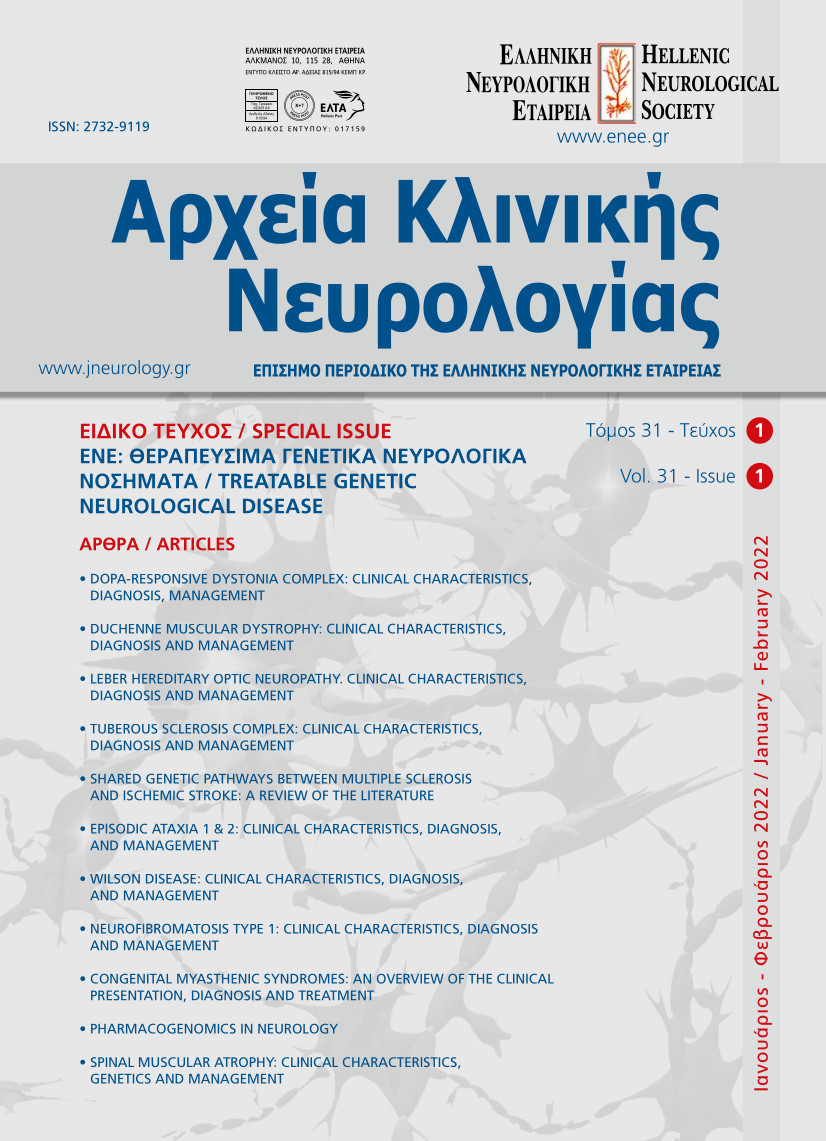DOPA-RESPONSIVE DYSTONIA COMPLEX: CLINICAL CHARACTERISTICS, DIAGNOSIS, MANAGEMENT
Περίληψη
Dopa – responsive dystonia (DRD) is a clinically and genetically heterogeneous condition that is caused by
the deficiency of enzymes involved in dopamine biosynthesis. Autosomal dominant mutations in GTP cyclohydrolase
1 account for most cases. DRD typically manifests in childhood or adolescence with dystonia
of the lower limb, which might spread gradually during the following decades to other body parts. Symptoms
exhibit a characteristic diurnal fluctuation and show a remarkable response to low doses of levodopa,
rendering DRD a treatable disorder. Atypical cases have also been described with more severe phenotypes
linked to various genotypes. Diagnosis is eventually based on appropriate targeted or non-targeted genetic
analysis. Long delays in diagnosis are not a rare phenomenon, thus, a levodopa trial is always advisable in
suspicious cases. Here, we present the DRD complex according to the new dystonia classification system
of 2013.


